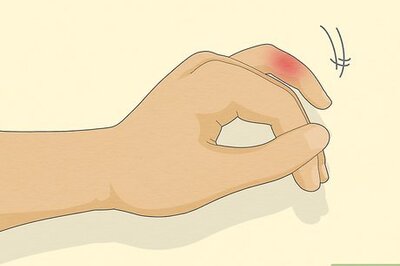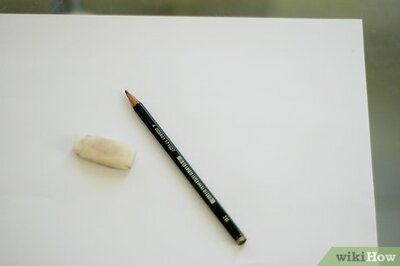
views
X
Research source
This article will teach you how to translate a shape on a coordinate plane.
Counting the Grid Boxes
Draw the shape on the coordinate plane. Start by plotting each point of the shape correctly onto the coordinate plane. Remember that the left number is the x-coordinate, and the right number is the y-coordinate. The x-axis is horizontal and the y-axis is vertical.
Understand how to read the question. If the question directly tells you to translate the shape by a certain number of units, skip this step. Math textbooks may write the question like this: What is the graph of T ⟨ x , y ⟩ ( △ A B C ) = ( △ A ′ B ′ C ′ ) {\displaystyle T_{\langle x,y\rangle }(\triangle ABC)=(\triangle A'B'C')} {\displaystyle T_{\langle x,y\rangle }(\triangle ABC)=(\triangle A'B'C')}? If the question is written like this, learn how to understand the question. T {\displaystyle T} T means translation. The subscripts for x and y mean how much you move the shape left/right and up/down. △ A B C {\displaystyle \triangle ABC} {\displaystyle \triangle ABC} is the shape you are translating or moving. △ A ′ B ′ C ′ {\displaystyle \triangle A'B'C'} {\displaystyle \triangle A'B'C'} will be the moved shape. It will still have the same side lengths and angles; only its position has changed. After translating △ A B C {\displaystyle \triangle ABC} {\displaystyle \triangle ABC}, it will equal △ A ′ B ′ C ′ {\displaystyle \triangle A'B'C'} {\displaystyle \triangle A'B'C'}
Read the x and y subscripts. The x-coordinate will determine how much you will move the shape left/right, and the y-coordinate will determine how much you will move it up/down. The right side of the coordinate plane is positive (from 0 to infinity), and the left side is negative (from 0 to negative infinity). For the x-coordinate, move the shape left if it is negative. If the number is positive, move the shape right. For the y-coordinate, move the shape down if it is negative. If the number is positive, move it upwards. You may encounter translations presented as a column vector in the form ( x y ) {\displaystyle {\begin{pmatrix}x\\y\end{pmatrix}}} {\displaystyle {\begin{pmatrix}x\\y\end{pmatrix}}}The same rules for moving left, right, up and down depending on the x and y values still apply. For example, ( − 2 3 ) {\displaystyle {\begin{pmatrix}-2\\3\end{pmatrix}}} {\displaystyle {\begin{pmatrix}-2\\3\end{pmatrix}}} represents a translation of two boxes left and 3 boxes up.
Start with your first point. Pick a point you will move first. Then, count boxes left or right depending on what the value of the x-coordinate is. To illustrate, if the problem said, "4 units right and 3 units down", move the shape right 4 boxes. Then, move the shape down 3 boxes. Another example: T ⟨ − 2 , 5 ⟩ ( △ A B C ) = ( △ A ′ B ′ C ′ ) {\displaystyle T_{\langle -2,5\rangle }(\triangle ABC)=(\triangle A'B'C')} {\displaystyle T_{\langle -2,5\rangle }(\triangle ABC)=(\triangle A'B'C')} If the point was ( 4 , 3 ) {\displaystyle (4,3)} {\displaystyle (4,3)}, move the point to the left 2 boxes. You are now at ( 2 , 3 ) {\displaystyle (2,3)} {\displaystyle (2,3)}. Then, move the point up 5 boxes. The translated point is ( 2 , 8 ) {\displaystyle (2,8)} {\displaystyle (2,8)} Label the new shape's points with ' (prime) symbols. So, A {\displaystyle A} A becomes A ′ {\displaystyle A'} {\displaystyle A'}. Repeat this process for every point of the original shape.
Without Counting Boxes
Draw the shape on the coordinate plane. Start by plotting each point of the shape correctly onto the coordinate plane. Remember that the left number is the x-coordinate, and the right number is the y-coordinate. The x-axis is horizontal and the y-axis is vertical.
Understand how to read the question. If the question directly tells you to translate the shape by a certain number of units, skip this step. Math textbooks may write the question like this: What is the graph of T ⟨ x , y ⟩ ( △ A B C ) = ( △ A ′ B ′ C ′ ) {\displaystyle T_{\langle x,y\rangle }(\triangle ABC)=(\triangle A'B'C')} {\displaystyle T_{\langle x,y\rangle }(\triangle ABC)=(\triangle A'B'C')}? If the question is written like this, learn how to understand the question. T {\displaystyle T} T means translation. The subscripts for x and y mean how much you move the shape left/right and up/down. △ A B C {\displaystyle \triangle ABC} {\displaystyle \triangle ABC} is the shape you are translating or moving. △ A ′ B ′ C ′ {\displaystyle \triangle A'B'C'} {\displaystyle \triangle A'B'C'} will be the moved shape. It will still have the same side lengths and angles; only its position has changed. After translating △ A B C {\displaystyle \triangle ABC} {\displaystyle \triangle ABC}, it will equal △ A ′ B ′ C ′ {\displaystyle \triangle A'B'C'} {\displaystyle \triangle A'B'C'}
Read the x and y subscripts. The x will determine how much you will move the shape left/right, and the y will determine how much you will move it up/down. The right side of the coordinate plane is positive (from 0 to infinity), and the left side is negative (from 0 to negative infinity). For the x-coordinate, move the shape left if it is negative. If the number is positive, move the shape right. For the y-coordinate, move the shape down if it is negative. If the number is positive, move it upwards. You may encounter translations presented as a column vector in the form ( x y ) {\displaystyle {\begin{pmatrix}x\\y\end{pmatrix}}} {\displaystyle {\begin{pmatrix}x\\y\end{pmatrix}}}The same rules for moving left, right, up and down depending on the x and y values still apply. For example, ( − 2 3 ) {\displaystyle {\begin{pmatrix}-2\\3\end{pmatrix}}} {\displaystyle {\begin{pmatrix}-2\\3\end{pmatrix}}} represents a translation of two boxes left and 3 boxes up.
Start with your first point. Pick a point you will move first. Add the x-subscript (or x value of the column vector) to your original x-coordinate, and the y-subscript (or y value of the column vector) to your original y-coordinate. You will now have the coordinate of your translated point. The same example from above: T ⟨ − 2 , 5 ⟩ ( △ A B C ) = ( △ A ′ B ′ C ′ ) {\displaystyle T_{\langle -2,5\rangle }(\triangle ABC)=(\triangle A'B'C')} {\displaystyle T_{\langle -2,5\rangle }(\triangle ABC)=(\triangle A'B'C')} If the point was ( 4 , 3 ) {\displaystyle (4,3)} {\displaystyle (4,3)}, add − 2 {\displaystyle -2} -2 to the 4 {\displaystyle 4} 4. 4 + ( − 2 ) {\displaystyle 4+(-2)} {\displaystyle 4+(-2)} equals 4 − 2 ; x = 2. {\displaystyle 4-2;x=2.} {\displaystyle 4-2;x=2.} Next, add 5 {\displaystyle 5} 5 to your y-coordinate, which is now ( 2 , 3 ) {\displaystyle (2,3)} {\displaystyle (2,3)}. 3 + 5 = 8 ; y = 8 {\displaystyle 3+5=8;y=8} {\displaystyle 3+5=8;y=8}. The translated coordinate is ( 2 , 8 ) {\displaystyle (2,8)} {\displaystyle (2,8)} Label the new shape's points with ' (prime) symbols. So, A {\displaystyle A} A becomes A ′ {\displaystyle A'} {\displaystyle A'}. Repeat this process for every point of the original shape.


















Comments
0 comment